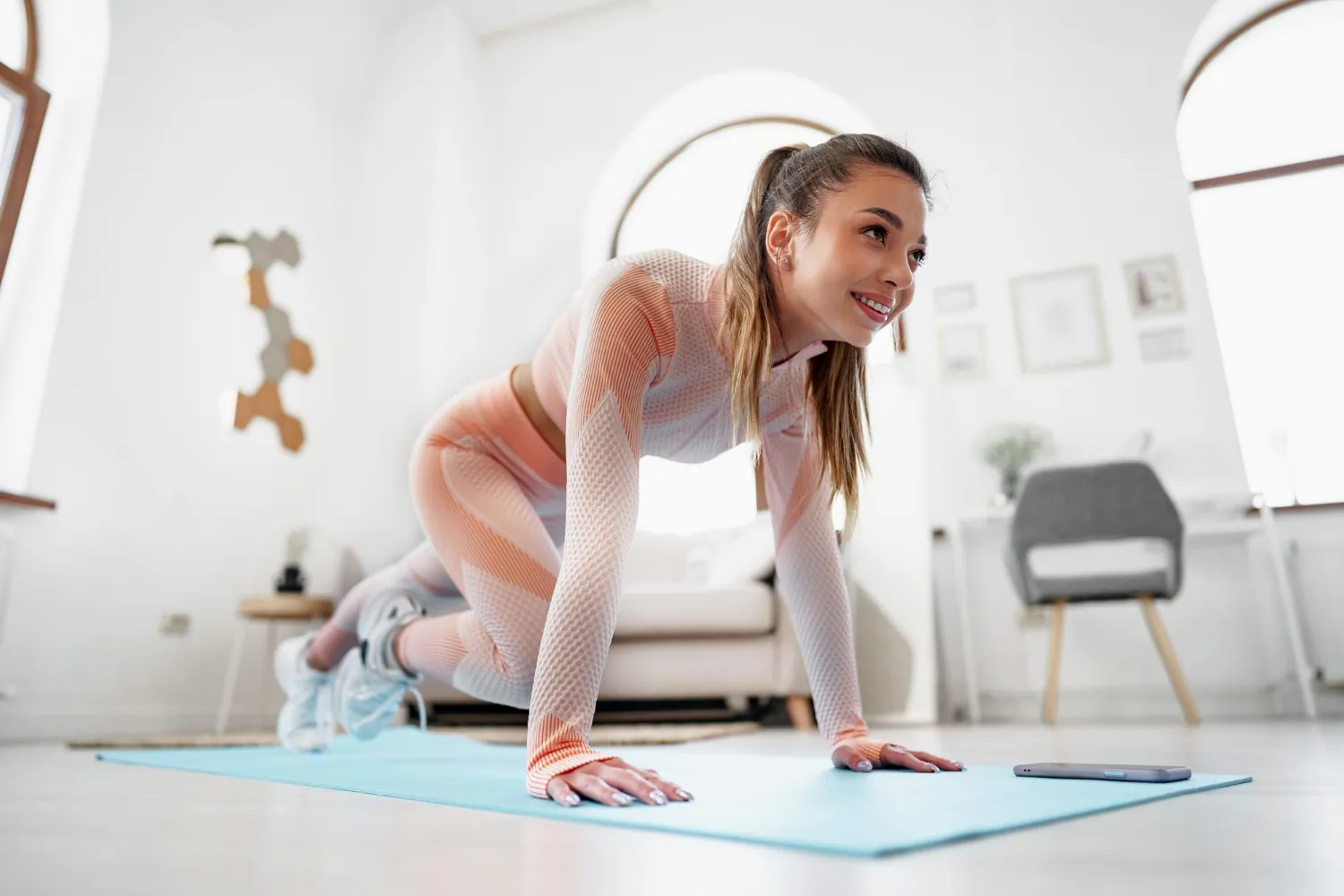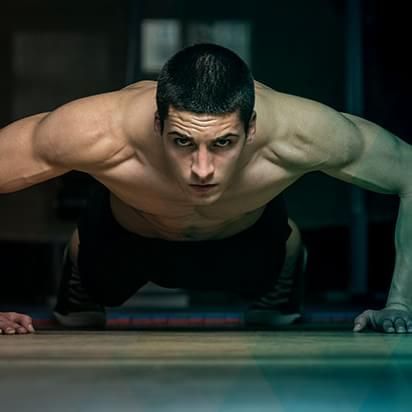When selecting an exercise mat, understanding the different materials and features available can significantly impact your workout experience. This article provides a comprehensive overview of the most common mat materials, their unique characteristics, and essential factors to consider when making your choice. By identifying the right mat for your specific needs—whether for yoga, high-intensity training, or eco-friendly practices—you can enhance your comfort, support, and overall performance during workouts.
In addition, we will explore stylish designs that can motivate you to stay committed to your fitness routine, along with eco-friendly options that support a sustainable lifestyle. With the right information, you can make an informed decision that aligns with your fitness goals and values.
In this article you will find:
Choosing the Right Material for Your Exercise Mat
When it comes to selecting the perfect exercise mat, the material plays a crucial role in enhancing your workout experience. The right material not only provides the necessary support and comfort but also affects durability, grip, and overall performance. With numerous options available, understanding the benefits and drawbacks of each material is essential for making an informed choice.
Popular Materials for Exercise Mats
Here are some of the most common materials used in exercise mats, along with their unique characteristics:
- PVC (Polyvinyl Chloride): PVC mats are among the most popular due to their affordability and durability. They offer excellent grip and cushioning, making them ideal for various workouts, from yoga to high-intensity training. However, they may contain harmful chemicals, so it’s essential to choose mats labeled as phthalate-free.
- TPE (Thermoplastic Elastomer): TPE is a newer eco-friendly alternative to PVC. It is lightweight, non-toxic, and offers good traction. TPE mats are often biodegradable and provide a comfortable surface for workouts, making them a great choice for environmentally conscious individuals.
- NBR (Nitrile Butadiene Rubber): Known for its excellent cushioning and shock absorption, NBR is ideal for those who require extra support during floor exercises. This material is often thicker than other options, providing a plush surface, but it may not be as durable as PVC or TPE.
- Natural Rubber: For those seeking a more sustainable option, natural rubber mats are biodegradable and provide exceptional grip and cushioning. They are ideal for yoga and Pilates practitioners. However, natural rubber may have a distinct smell and can be heavier than synthetic options.
- Cotton or Jute: These materials are often used in yoga mats, providing a natural feel and excellent grip. They are absorbent and can be easily washed, but they may lack the cushioning required for high-impact workouts.
Factors to Consider When Choosing Material
While the type of material is crucial, several factors can influence your decision:
- Workout Type: Consider the type of workouts you’ll be doing. For high-impact activities, prioritize cushioning and support, while for yoga, focus on grip and stability.
- Allergies and Sensitivities: If you have sensitivities to certain materials, such as latex, ensure that you select a mat that is free from those allergens.
- Portability: If you plan to travel with your mat, lightweight materials like TPE or cotton are easier to carry compared to thicker options.
- Maintenance: Some materials require specific cleaning methods. PVC mats can be wiped down easily, while natural materials may need more care to prevent mold or deterioration.
Making the Right Choice for Your Needs
Ultimately, the best exercise mat material is one that meets your specific needs and preferences. Test different mats in-store if possible, to assess their grip, cushioning, and overall feel. Also, consider reading expert reviews and user feedback to find the right balance between performance and comfort.
Choosing the right material will set the foundation for an effective workout routine, enhancing your overall experience and encouraging consistency in your fitness journey.
Essential Features for Maximum Comfort and Support
When it comes to achieving your fitness goals, the right exercise mat can make a significant difference. Not only does it provide a stable surface for workouts, but it also enhances comfort and support, allowing you to focus on your exercises without distractions. Here are the essential features you should look for to ensure maximum comfort and support in your exercise mat.
Thickness and Cushioning
The thickness of your exercise mat is one of the most critical factors influencing comfort. Generally, mats range from 1/8 inch to 1 inch thick. Here’s how thickness affects your workout:
- Thinner Mats (1/8 to 1/4 inch): Ideal for yoga and Pilates, providing stability and balance for standing poses and transitions. However, they may not offer sufficient cushioning for high-impact exercises.
- Medium Thickness Mats (1/4 to 1/2 inch): Suitable for a variety of workouts, offering a balance between cushioning and stability, making them versatile for both strength training and flexibility exercises.
- Thicker Mats (1/2 to 1 inch): Perfect for floor exercises and high-impact workouts, offering superior cushioning that protects your joints during exercises like push-ups or lunges.
Grip and Traction
A mat’s surface texture is crucial for providing grip, especially during dynamic movements. Look for mats that feature:
- Non-Slip Surfaces: Materials with a textured surface can enhance grip, preventing slips during workouts. This is especially important for yoga practitioners who rely on stability.
- Moisture Resistance: Some mats are designed to wick away sweat, maintaining traction even when wet. Consider materials that are both slip-resistant and easy to clean.
Supportive Features
To ensure your body is well-supported during workouts, consider mats with additional supportive features:
- Joint Support: Look for mats with extra cushioning in specific areas, especially if you have knee or back issues. Mats designed with additional padding can help absorb impact.
- Stability: A mat that provides stability during exercises can enhance your performance. Mats with a thicker base often offer better stability for various workouts.
Durability and Longevity
Investing in a durable mat can save you money in the long run. Factors that contribute to a mat’s durability include:
- Material Quality: High-quality materials tend to withstand wear and tear better than cheaper alternatives. For instance, natural rubber mats generally last longer than PVC mats.
- Resistance to Deformation: Look for mats that maintain their shape over time, even with frequent use. Mats that flatten or lose their cushioning can lead to discomfort during workouts.
Maintenance and Care
Proper maintenance extends the life of your mat and ensures a hygienic workout environment. Consider mats that are:
- Easy to Clean: Mats that can be wiped down or thrown in the washing machine simplify maintenance, especially for those who sweat heavily during workouts.
- Odor Resistant: Some materials can retain odors, particularly if they are not cleaned regularly. Look for mats designed to resist odors, ensuring a fresh workout experience.
By prioritizing these essential features, you can find an exercise mat that provides maximum comfort and support, enhancing your overall fitness experience. For more insights on selecting the best workout equipment, check out this comprehensive guide on yoga mats and their impact on your practice.
Stylish Designs to Inspire Your Workout Routine
A workout mat is not just a functional piece of equipment; it can also be a reflection of your personal style and motivation. Stylish designs can invigorate your workout space, making exercise more enjoyable and inspiring you to stay committed to your fitness goals. Here, we explore the latest trends in exercise mat designs that combine aesthetics with functionality, helping you find a mat that resonates with your personality.
Color and Pattern Trends
Color and patterns play a significant role in setting the mood for your workouts. Here are some trends that are currently making waves:
- Bold Colors: Vibrant hues like electric blue, fiery red, and neon green can energize your space and boost motivation. These colors are perfect for high-intensity workouts, as they can stimulate energy and enthusiasm.
- Nature-Inspired Patterns: Floral prints, leafy designs, and earthy tones help create a serene environment, making them ideal for yoga and Pilates enthusiasts. These designs can provide a calming influence, enhancing your mindfulness practice.
- Geometric Shapes: Clean lines and symmetrical patterns offer a modern aesthetic that appeals to those who appreciate minimalism. Geometric designs can also create visual interest without being overwhelming, making them versatile for various workout styles.
Eco-Friendly and Sustainable Designs
As awareness of environmental issues grows, many brands are focusing on eco-friendly materials and designs:
- Recycled Materials: Some mats are made from recycled plastics or rubber, combining sustainability with style. These mats often feature unique textures and colors that stand out in the market.
- Natural Fibers: Mats made from jute, cotton, or natural rubber are gaining popularity. They not only offer a stylish appearance but also align with eco-conscious values.
Customizable Options
Personalization is a trend that allows you to express your individuality:
- Custom Prints: Some companies offer the option to create custom designs or prints on your mat. This allows you to feature inspiring quotes, images, or patterns that resonate with your fitness journey.
- Monogramming: Adding your initials or a personal touch can make your mat feel uniquely yours, enhancing your connection to your workout routine.
Functional Aesthetics
Stylish designs do not have to compromise functionality. Look for mats that combine beauty with practicality:
- Textured Surfaces: Many stylish mats incorporate textured surfaces that not only look good but also provide excellent grip and stability. This feature is crucial for maintaining safety during workouts.
- Lightweight and Portable: A beautiful mat that is also lightweight and easy to carry encourages you to take your workout on the go, whether it’s to the gym, a park, or a friend’s house.
Where to Find Stylish Mats
To discover a wide range of stylish exercise mats, consider checking out reputable fitness retailers and online platforms. Brands like Liforme and Gaiam offer a variety of aesthetically pleasing options that do not compromise on performance or quality. You can also explore local boutiques that specialize in fitness gear for unique designs that stand out.
Incorporating a stylish mat into your workout routine can significantly enhance your motivation and enjoyment. By choosing a design that resonates with you, you’re more likely to look forward to your workouts, making fitness a more integral and enjoyable part of your life.
Eco-Friendly Options for Sustainable Fitness
In today’s world, where environmental concerns are at the forefront, making eco-friendly choices in fitness is more important than ever. Selecting sustainable exercise mats not only reduces your carbon footprint but also promotes a healthier lifestyle. Here, we explore various eco-friendly options available on the market, helping you make informed choices for your fitness journey.
Materials That Make a Difference
When choosing an eco-friendly exercise mat, the material is the most crucial factor. Here are some sustainable materials that are both kind to the planet and effective for your workouts:
- Natural Rubber: Sourced from rubber trees, natural rubber mats are biodegradable and provide excellent grip and cushioning. They are a popular choice for yoga and Pilates enthusiasts due to their non-toxic nature and durability.
- TPE (Thermoplastic Elastomer): TPE mats are made from a blend of natural and synthetic materials but are entirely free from harmful chemicals like PVC and phthalates. They are lightweight, recyclable, and provide good traction, making them suitable for various workouts.
- Cork: Cork mats are harvested from the bark of cork oak trees, making them a renewable resource. They are naturally antimicrobial, providing a hygienic surface, and their unique texture offers a great grip for yoga practices.
- Jute: Jute mats are made from a natural fiber that is both durable and biodegradable. They provide a textured surface for enhanced grip, making them a solid choice for yoga and low-impact exercises.
Brands Committed to Sustainability
Many companies are now prioritizing sustainability in their product lines. Here are some brands that offer eco-friendly exercise mats:
- Liforme: Known for its high-quality yoga mats, Liforme uses natural rubber and eco-friendly production methods. Their mats are designed for durability and performance while being kind to the environment.
- Manduka: Manduka offers a range of sustainable mats, including options made from natural rubber and recycled materials. Their commitment to sustainability extends to their packaging and production processes.
- Gaiam: Gaiam is dedicated to creating eco-friendly fitness products. Their mats feature non-toxic materials and are designed to be both durable and sustainable.
Eco-Friendly Practices for Maintenance
To further enhance the sustainability of your fitness routine, consider adopting eco-friendly practices for maintaining your exercise mat:
- Natural Cleaners: Use homemade cleaning solutions, such as a mixture of vinegar and water, to clean your mat without harsh chemicals. This not only preserves the mat but also reduces your environmental impact.
- Air Drying: After cleaning, allow your mat to air dry naturally instead of using a dryer. This practice conserves energy and prolongs the life of your mat.
- Recycling Options: When it’s time to retire your mat, check if the manufacturer offers a recycling program. Many brands now provide options for recycling old mats to keep them out of landfills.
Benefits of Eco-Friendly Mats
Choosing eco-friendly exercise mats offers several benefits:
- Healthier Indoor Air Quality: Non-toxic mats help reduce indoor air pollution, contributing to a healthier workout environment.
- Increased Comfort: Many sustainable materials provide excellent cushioning and support, enhancing your overall workout experience.
- Contributing to a Sustainable Future: By choosing eco-friendly products, you support companies committed to sustainability and environmental responsibility.
As you embrace a fitness routine, remember that your choices can have a significant impact on the planet. Opting for eco-friendly exercise mats not only enhances your workouts but also aligns your fitness journey with a commitment to sustainability. For more information on sustainable fitness products, explore resources like Yune Yoga, which offers insights into eco-conscious practices in the fitness industry. When selecting an exercise mat, consider the material, thickness, grip, and support features to ensure maximum comfort and performance. Popular materials include PVC for affordability, TPE for eco-friendliness, and natural rubber for durability. Thicker mats offer better cushioning for high-impact workouts, while textured surfaces enhance grip and stability. Prioritize mats that are easy to clean and maintain to prolong their lifespan.
For those committed to sustainability, opt for mats made from renewable resources like cork or jute, and choose brands that prioritize eco-friendly production methods. Incorporate natural cleaning solutions and air drying to maintain your mat without harsh chemicals. By making informed choices, you can enhance your fitness routine while supporting environmental responsibility.




